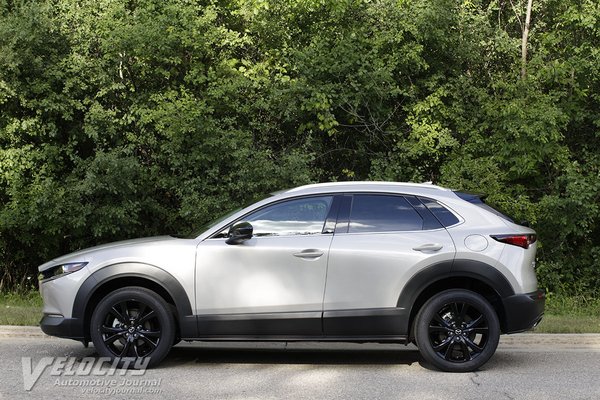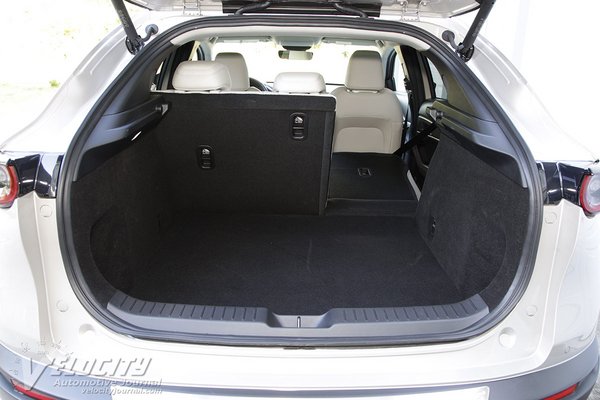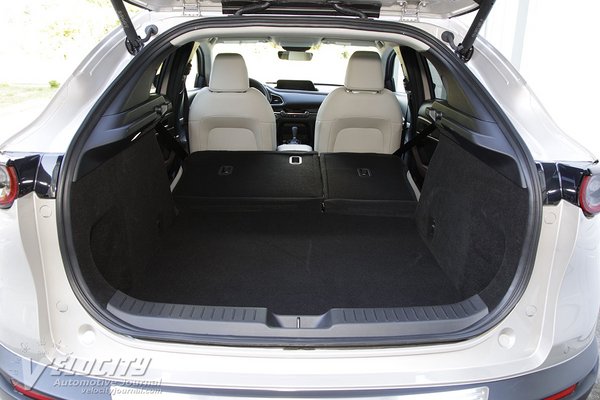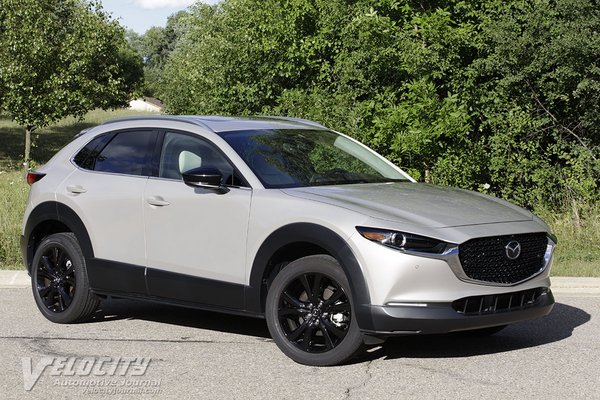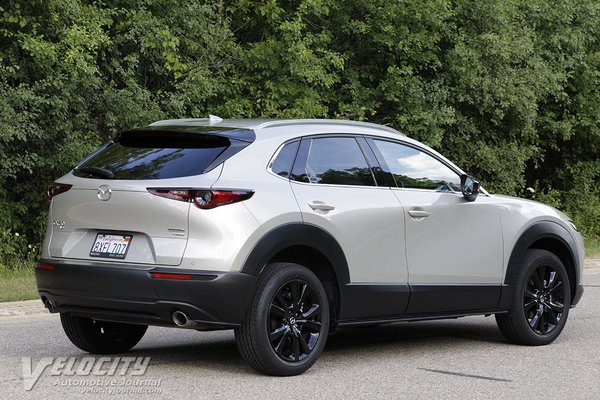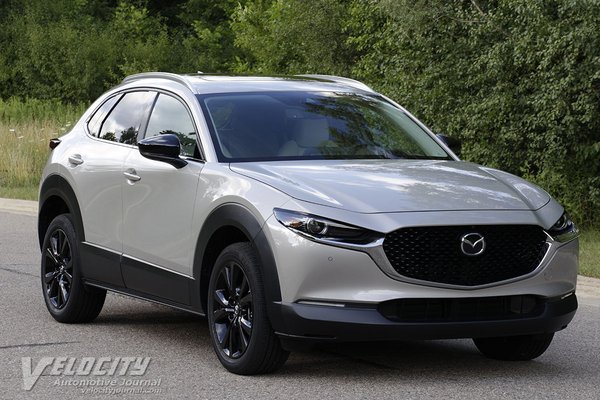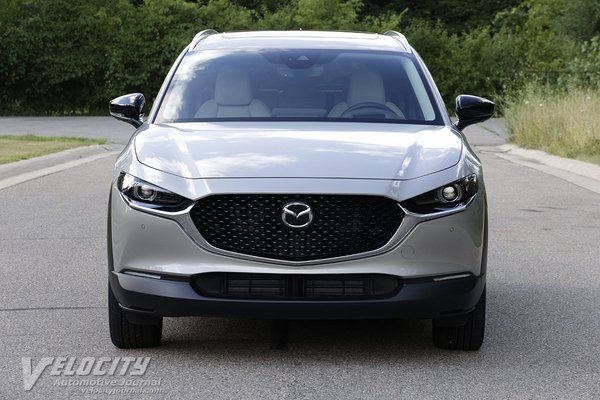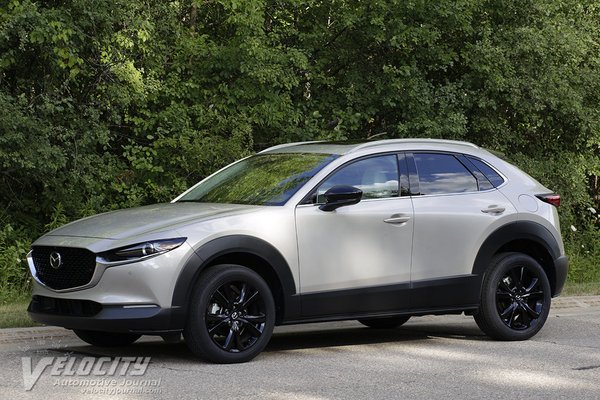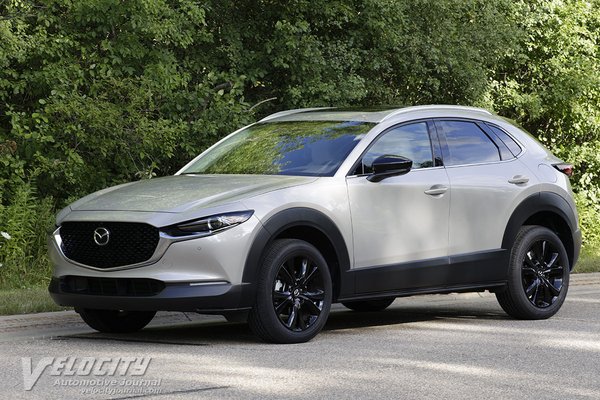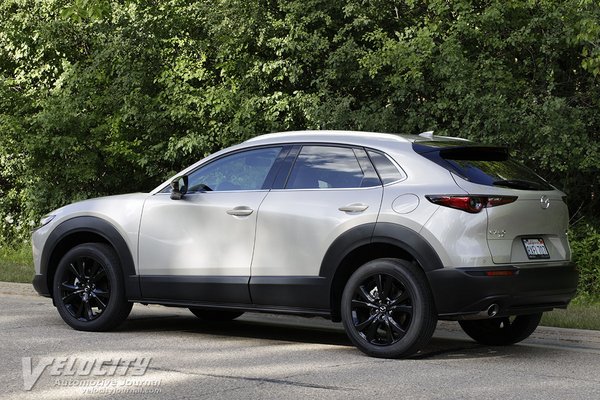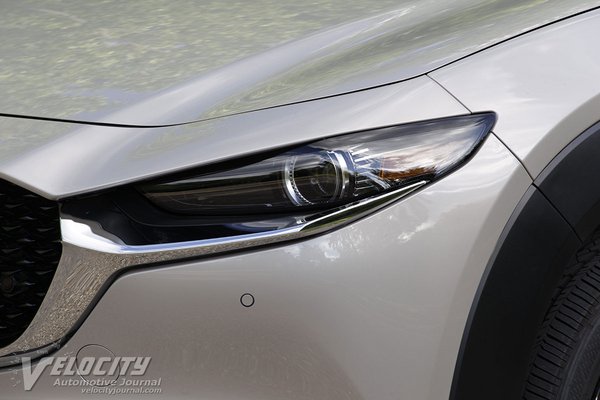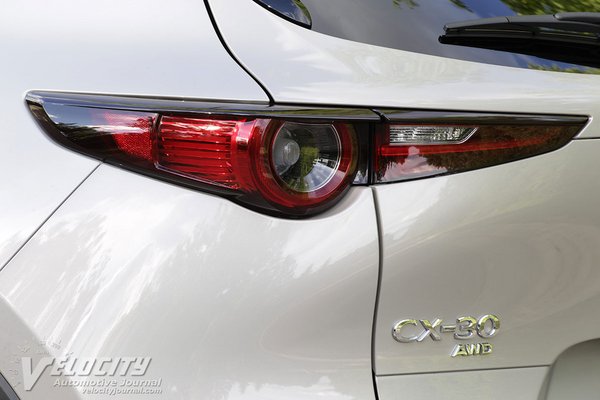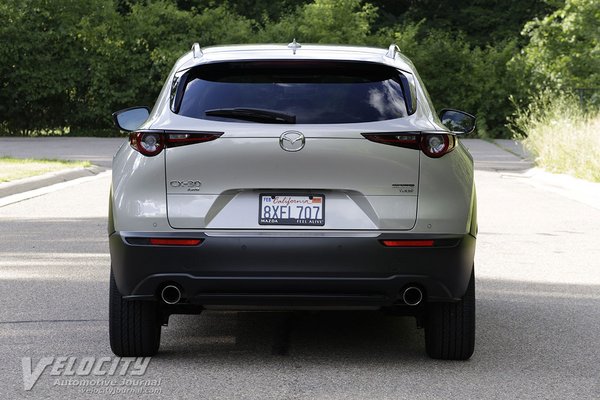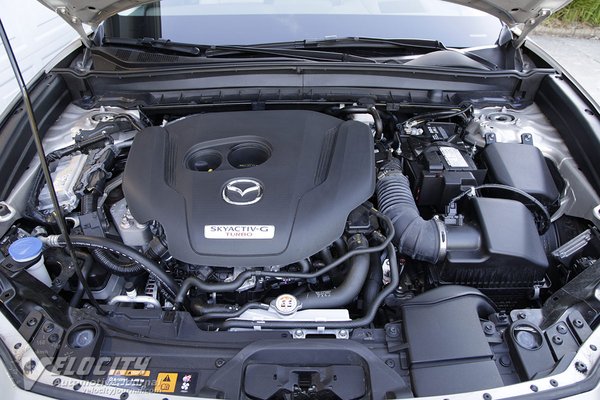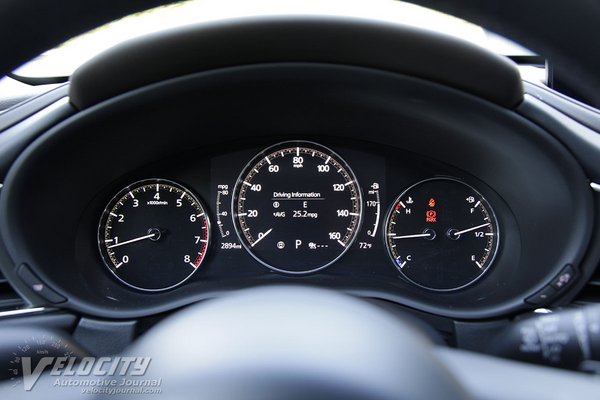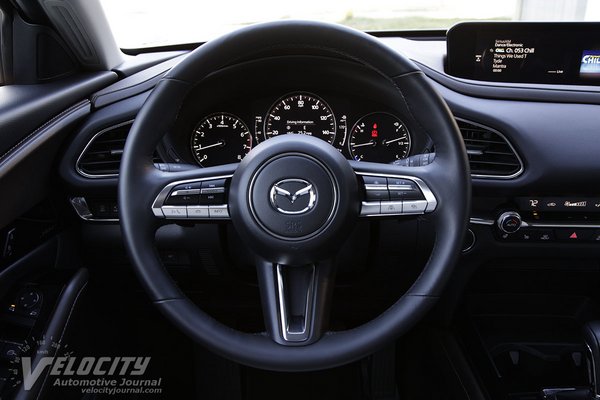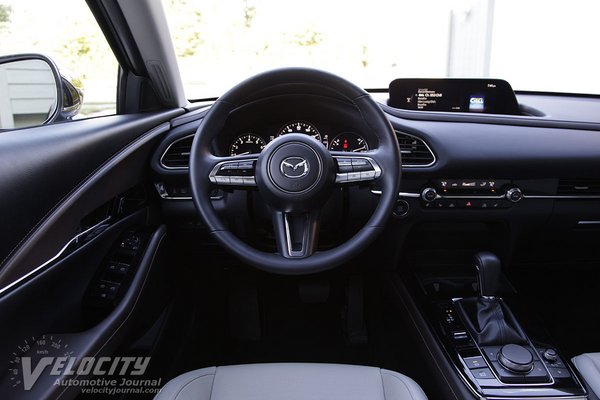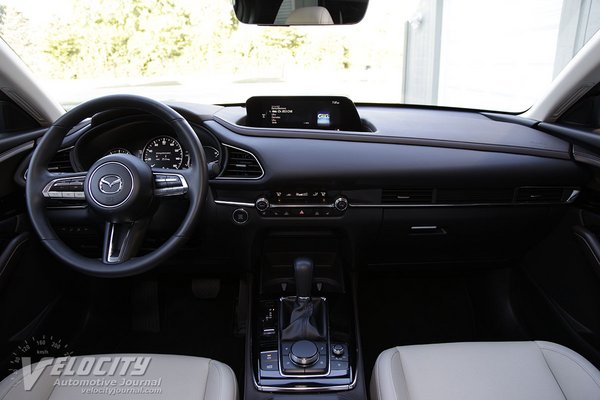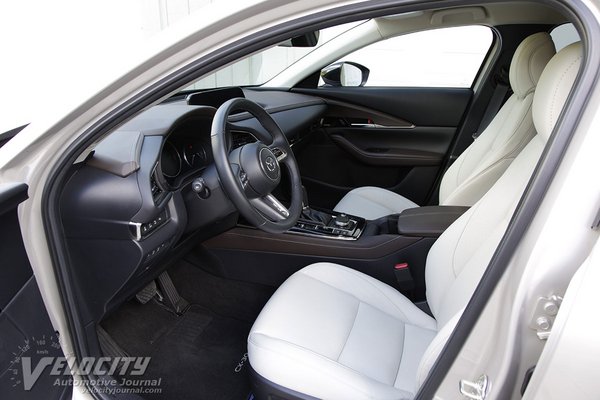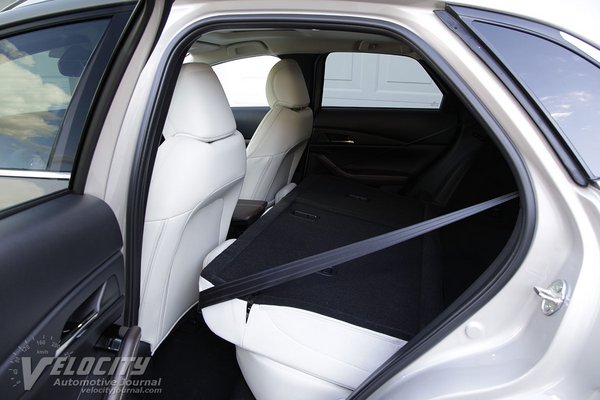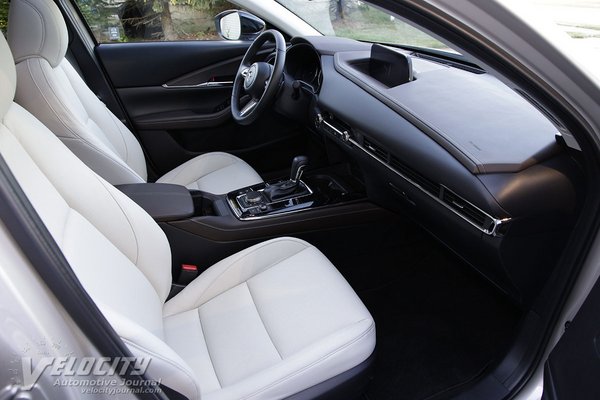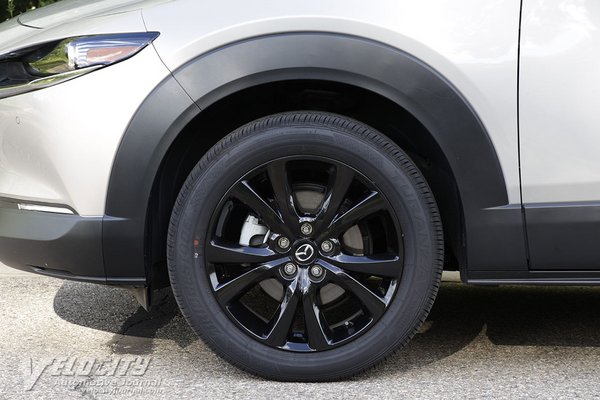2022 Mazda CX-30 2.5 Turbo Premium AWD
09/04/2022
Shahed Hussain
The US market is awash in SUVs for every purpose and budget. Mazda has joined the rush to develop compact SUVs, as customers flock to affordable vehicles easy to maneuver in cities and parking lots. The newest addition to Mazda's SUV lineup is the CX-30, positioned below the popular CX-5 in both size and price.
Mazda's CX-30 lineup starts with the 2.5 S, Select, Preferred, Carbon Edition and the top Premium model, all powered by a 2.5L inline-4. A turbocharged version of the 2.5L is under the hood of the 2.5 Turbo, 2.5 Turbo Premium and Premium Plus. Pricing ranges from $22,500 (2.5 S) to $34,700 (2.5 Turbo Premium Plus). Mazda simplified the 2022 CX-30 lineup to AWD-only, eliminating the previous FWD models.
We tested a CX-30 2.5 Turbo Premium AWD ($33,100). Significant standard equipment includes: navigation, head-up display, leather seats, heated front seats, heated steering wheel, paddle shifters, 8-way power driver's seat w/power lumbar, moonroof, adaptive front LED headlights, Bose 12-speaker audio system, 8.8-in. infotainment display, Apple CarPlay(TM), Android Auto(TM), rear power liftgate, roof rails, and 18-in. alloy wheels. Standard active safety technologies consist of dynamic stability control, lane departure warning, lane keep assist, radar cruise control, rearview camera, and blind spot monitoring with cross-traffic alert.
Mazda has simplified its powertrain portfolio: the 2.5L direct-injected Skyactiv-G engine (normally aspirated or turbocharged) is under the hood of most vehicles sold in the US (notable exceptions being the MX-5 and base Mazda3). In the CX-30 Turbo, the aluminum DOHC 2.5L develops 250-hp @ 6,000 RPM and 320 lb.-ft. @ 4,000 RPM (93-octane fuel). A 6-speed automatic drives all four wheels through a 3.841:1 axle ratio. Transmission gear ratios for the 2.5L turbo are slightly different than for the non-turbo four. Fuel economy is rated at 22/30 MPG (city/hwy.) for the 2.5L turbo and AWD powertrain. We averaged about 25 MPG in mixed city and highway driving.
Most SUVs in this class have an all-independent suspension design, but Mazda chose a semi-independent rear layout. The CX-30 uses the typical MacPherson struts and stabilizer bar front suspension. Instead of a multi-link rear setup, Mazda opted for a simpler torsion beam, coil springs, and dampers. Disc brakes are at all four corners: 11.6 in. dia. rotors in front and 11.9 in. rotors in the rear. Steering is a rack-and-pinion setup with electric power assist. The test vehicle had Bridgestone Turanza 215/55R18 tires mounted on 18-in. dia. alloy wheels. Curb weight rises from 3,388 lbs. (2.5L) to 3,505 lbs. (2.5L turbo).
Mazda's interior design and materials are consistently more upscale than its competition. Instead of metallic painted trim, the CX-30 inlays matte aluminum on the steering wheel, dash and vents. Most interior surfaces are padded instead of hard plastic. Contrasting stitching on the door panels and seats add to the premium interior ambiance.
Electronic instrument panels have become increasingly common in new vehicles, but Mazda adopted a combination of electronic and analog gauges. The tachometer, coolant temperature and fuel gauges are analog, but the speedometer, fuel consumption and vehicle range are digital displays. Inset within the leather-wrapped steering wheel are audio, cruise, and mobile phone controls. Paddles behind the steering wheel enable transmission shifts on demand. The tablet-style infotainment display on the dash is controllable by a multi-function rotary knob and buttons. Climate control and front seat heater setting are readily accessible on the dash display panel. A USB port is located above the dual cupholders on the center console. An additional USB port and a 12V power outlet are in the center console bin.
As is common is compact SUVs, the driver's seat offers power adjustability, but the front passenger only gets manual seat adjustments. The front seat thigh bolsters are relatively flat, but torso support is more supportive. Front headroom is adequate for occupants up to 6 ft. height., but rear headroom is limited to passengers no taller than 5 ft.-10 in. Rear legroom is adequate if not spacious, but the short seat cushion reduces thigh support and overall comfort. The center rear position is only tolerable for short trips due to the hard seatback.
Mazda's turbo four delivers ample low and midrange throttle response, but does sound buzzy near the 6,200 RPM redline. Engineers tuned the powertrain to minimize engine vibration intrusion into the cabin, but this long-stroke four doesn't reward revs. The 6-speed automatic shifts seamlessly and usually selects the correct gear in normal driving. Toggle the transmission into Sport mode and the transmission shifts higher in the rev range. Occasionally, we preferred using the shifter paddles for more direct control of the transmission shift points.
Mazda's have typically been more enjoyable to drive than most of its competition, so we had high expectations for chassis dynamics. On the patched highways around Detroit, the suspension did not feel as planted as we had hoped; the rear axle bounced over bumps and the firm damper settings resulted in a jittery ride on bumpy roads. In contrast, on freshly repaired roads the suspension delivered a composed ride with excellent damping control. Chassis engineers dialed in moderate body roll and mild understeer similar to other SUVs in its class. Steering assist is calibrated to maintain tracking on the highway without feeling too heavy in parking maneuvers. Over smooth or pitted roads, the steering transmits road surface textures accurately. Brake performance is acceptable with progressive pedal actuation and decent pedal feel. Mazda's AWD system sends power to the rear wheels automatically, but we felt momentary torque steer when accelerating from a stop. Although tire and wind noise at highway speeds is not excessive, the CX-30's cabin is not as serene as some other SUVs in its class.
Among the many compact SUVs available, the CX-30 is one of the few that prioritizes the "sport" in SUV. Mazda's focus on driving dynamics proves that dull and boring need not be synonymous with affordable SUVs, but its decision to handicap the CX-30 with a torsion beam rear suspension is regrettable. Opting for the 2.5L turbo adds nearly $3K to the CX-30 Premium, a fairly substantial sum. Most customers will likely be satisfied with the base engine, but enthusiasts may be tempted to spend extra for the 2.5L turbo.

